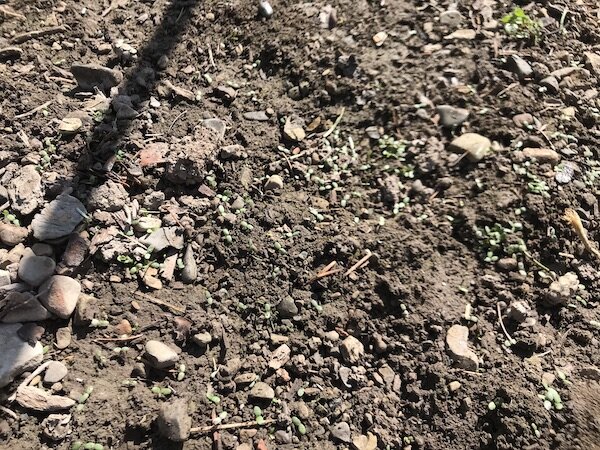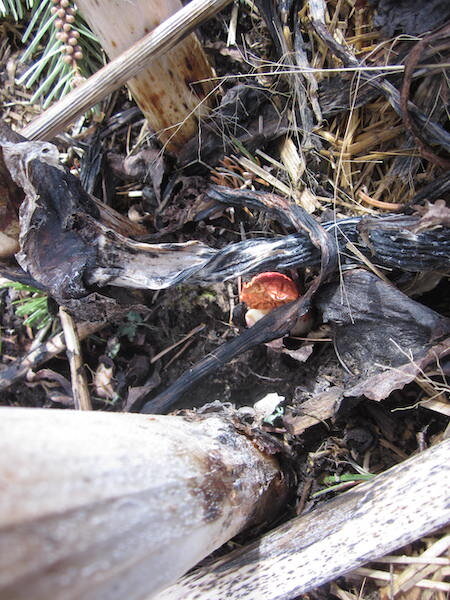Excitement in the Neighborhood
We had an eventful day yesterday. I had gone out to the greenhouse mid-morning to turn off the propane heater and noticed that the neighbor whose property backs up onto our pig pasture at the far west end was burning a couple of big slash piles. He lost quite a few trees in that big windstorm last month. He had a small excavator out there to help manage the piles. Technically, it is still open burning season, but people are expected to check air quality and wind conditions and use common sense.
About half an hour later, our fire department got paged out for a tree on fire at that address. I grabbed my phone and started walking in that direction, calling the fire chief as I went. He had acknowledged the page and I figured he would appreciate some first-hand intel. I saw what was happening as soon as I got to the garden.
A tree was indeed on fire:
The homeowner had called it in. Within a few minutes, our neighbor Mike, who is also on the fire department, brought the wildland truck from the station around the corner, and then another responder came with another engine. They cut the tree down and the homeowner added it to the slash pile.
I think there were at least half a dozen calls for rural fire departments to respond to out-of-control grass fires yesterday. It’s still windy, and one strong breeze is all that is required for a fire to get out of hand.
I am hoping we have a rainy May and June, because a bad fire season on top of everything else that is happening is the very last thing we need.
******************************************************
I am trying to do my part to support local fabric businesses. I ordered some fabric from Jordan Fabrics because I have enjoyed watching their YouTube videos. I ordered four cones of 40wt quilting thread—finally, some beige!—from Heartbeat Quilting in Spokane. I’ve been trying, since January, to order an Accuquilt die through one of the quilt stores here, but that’s been an exercise in frustration, and it isn’t really the store’s fault. I want the Drunkard’s Path die that makes the 7” block. I have the Drunkard’s Path dies that make the 3-1/2” and 4” blocks. The store didn’t have the larger die in stock but they are more than willing to order for customers, so I asked them back in January to order that one for me. By the time I got back in there, after the situation with my MIL, it was the first week of March. They had the die, but Accuquilt had sent one of the small ones that I already own. The store owner was very apologetic and said she would re-order it. I went ahead and paid for it, and the woman who was helping me verified which die I wanted from the catalog. About a week ago, I remembered that I hadn’t heard from them. When I contacted the store and talked to the owner, she said that yes, the die had come in but it was again the wrong size. She had called Accuquilt and talked to them and was trying to get them to ship the correct die.
The husband says this is the kind of stuff that drives him straight to Amazon’s website when he needs something. I get it, but I don’t think this is the store’s fault. I rather expected that Accuquilt would do a better job of supporting its dealers. In any case, the owner of the store thinks the die will come in this week and I can stop by and pick it up. I’ve already paid for it, so they can leave it curbside for me if I let them know when I’ll be there.
I also went ahead and bought a set of feet for the Juki serger that includes the elasticator foot. I anticipate making more knit tops for myself, so I might as well have it:
The other feet are the cording foot and the blind hem foot.
******************************************************
My mother cleaned her kitchen and sent me this book:
I was good this year and did not plant the entire packet of zucchini seeds, although we still don’t need 12 plants. I’ll find homes for the extras.






































